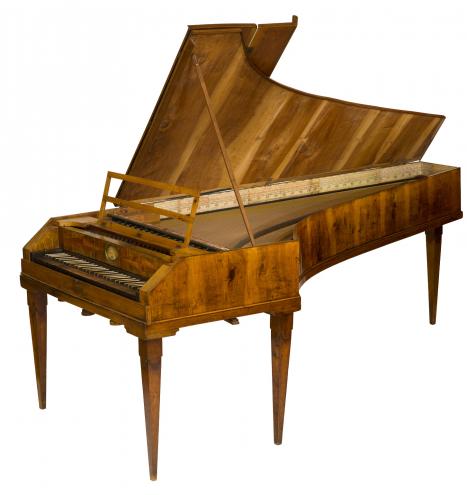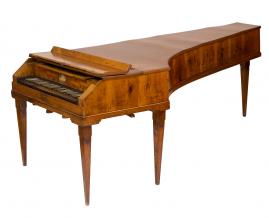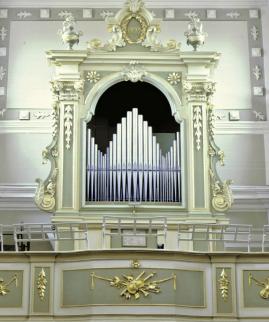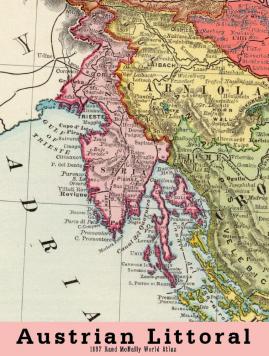hammerflügel
Pietro antonio bossi
Gradisca d’Isonzo 1802
A grand piano of Viennese type based on the model of Anton Walter, built at the south-western frontier of the Austro-Hungarian Empire.
Mechanism: Viennese mechanism
Range: 5 octaves, 61 keys (F 1 – f 3)
Levers, Pedals: 3 Knee levers (from left to right): bassoon; dampers; moderator
Stringing:
Brass: F 1 – E
Iron: F – f 3
Signature: "Pietro Antonio // Bossi Grad [isc] a (printed) 1802 (ms)"

Pietro Antonio Bossi (1775 Romans d'Isonzo - 1848 Trieste) likely comes from a family of organ builders with a long tradition spanning many generations. Like many other organ builders of this time (during a period when the demand for organ repairs and new constructions declined significantly due to the aftermath of the French Revolution and the dissolution of many monasteries), he also worked as a piano builder. Nevertheless, some of his organs, including the organ in Perteole 1799, have survived.
In 1798, after his marriage, he moved to the neighboring town of Gradisca at the old border with the Republic of Venice, where this grand piano was also created. However, the craftsmanship of this instrument in many details resembles the production of the leading Viennese workshop of Anton Walter at that time. Whether this indicates a prior stay in Vienna, perhaps as a journeyman, or serves as evidence of a copy after a model instrument by Walter remains unclear. It is documented that Viennese workshops also delivered to distant crown lands like the "Littoral," and the prospect of a knowledgeable piano builder offering pianos corresponding to Viennese standards, but with lower delivery costs (decades before the relevant railway connections!) seemed quite promising.
Nevertheless, his unfavorable economic situation during the region's brief affiliation with France's Illyrian provinces led him to relocate to Triest around 1815. He continued to work as an organ builder there but likely also continued to offer pianos and musical materials.
L: Lorenzo Nassimbeni: "Bossi Pietro Antonio" in: Dizionario biografico dei friulani.







